Ready to reduce cart abandonment? Follow these 12 tactics.
When it comes to Shopify growth strategies, shopping cart abandonment is one of the first things you’ll want to get right.
Shopify cart abandonment represents a sale that you had in the palm of your hand… and then it quickly disappeared. As an online store owner, dealing with cart abandonment can be super frustrating. Although, it doesn’t have to be!
Just remember, the people who abandoned their carts:
- Already know about your brand
- Have already shown an interest in your products
This means winning back those sales is a lot easier than acquiring a brand new customer.
In this guide, we’ll cover everything you need to know about Shopify cart abandonment, including some of the best strategies that you can use to reduce and recover cart abandonment on your Shopify store.
- What is Shopify Cart Abandonment?
- What is Shopify Cart Abandonment Rate?
- What Happens After Cart Abandonment?
- Main Reasons for Cart Abandonment
- Using Shopify Cart Abandonment Data
- How to Reduce Shopify Shopping Cart Abandonment: 12 Strategies
What is Shopify Cart Abandonment?
Shopify cart abandonment is when a customer adds a product to their cart on your Shopify store but then leaves your website before they complete the purchase. Their cart, and the potential sale, were “abandoned”.
Cart abandonment represents a sale that you could have made. When people add an item to their cart, they generally have a very high buying intent. The customer has shown an interest in your product, but they just couldn’t commit to the sale, or find the right inspiration to get them to complete the purchase.
Luckily, an abandoned cart on your Shopify store doesn’t mean the sale is lost for good. There are plenty of ways that you can try to rope those “lost” customers back in and try to get them to make the sale.
What is Shopify Cart Abandonment Rate?
Shopify cart abandonment rate is the number of customers that add products to their carts compared to the rate of purchases on your Shopify store.
As an eCommerce business, it’s important that you keep track of your cart abandonment rate. This can help you understand how much revenue you have potentially “lost” and what rate of customers you are losing out on.
To calculate your Shopify cart abandonment rate, you can use the following formula:
[Completed purchases / Carts created] x 100 = Cart abandonment rate
So, what is a good cart abandonment rate for your Shopify store?
Well, nearly 70% of all carts are abandoned. If your cart abandonment rate is high, don’t panic! This is normal.
It’s also useful to note that the type of device shoppers are using influences their cart abandonment. Here are the average cart abandonment rates based on the device:
- Desktop: 69.75%
- Smartphone: 85.65%
- Tablet: 80.74%
Look at what device most of your shoppers use, and compare your cart abandonment rate to the relevant average.
What Happens After Cart Abandonment?
On top of understanding your Shopify store’s cart abandonment rate, it’s also important to know what users do after they have abandoned their carts. According to a study of UK shoppers, the most common post-abandonment behaviors that customers take include:
- Purchasing the same item from the same website at a later date
- Purchase the same item from a different website
- Did not purchase the item
- Purchased the item from a physical store
So there is good news – most cart abandons still result in a sale. This is why it’s important for you to apply the most effective cart abandonment strategies to help you turn abandoned carts into revenue.
Main Reasons for Cart Abandonment
If you’re going to reduce your Shopify cart abandonment rate, then it’s important to understand why shoppers abandoned their carts in the first place. Here are the five main reasons why Shopify cart abandonment takes place.
High Additional Costs
Many customers get scared away by additional, unexpected costs. This includes costs like shipping fees, taxes, or handling charges.
Customers often feel cheated when a product is advertised at a certain price, and their checkout price ends up being much higher. To avoid this, you could try to offer free shipping and eliminate these additional fees. In return, the price of your products could absorb these fees.
Customers Need to Create an Account
Requiring an account can be a major turn-off for shoppers. This adds unnecessary friction at checkout, which shoppers can avoid by purchasing their products on another site.
Many shoppers don’t want to take the time to create an account and share their personal information. Instead, they just want to enter a site and make a purchase.
Slow Fulfilment
Today’s world of eCommerce moves at a fast pace. Customers expect speedy deliveries. If your store is too slow for customer expectations, it could result in an abandoned cart.
So many stores offer next-day or same-day delivery. If you don’t offer this, then there’s a good chance that shoppers could choose another store over yours.
The good news is that there are many great courier companies out there with speedy fulfillment options for small businesses. You could even charge a premium for same-day or next-day delivery.
Lack of Trust
If your site feels untrustworthy, you can expect to say goodbye to possible customers. With so many online scams and frauds that exist, shoppers are increasingly aware of digital theft. This is especially true when a store asks for credit card and personal information.
Make sure that your site is secure, and includes all relevant security badges and standards. Adding visible reviews and testimonials from customers will also help to add trust.
Complicated Checkout Process
Online shoppers today want fast and convenient experiences. If your checkout process takes too long, with lengthy forms and multiple requests, many customers will quickly give up.
Make sure your checkout process only asks for essential information. This makes the process shorter, easier, and more convenient.
Using Shopify Cart Abandonment Data
Before you start applying strategies to reduce Shopify cart abandonment, the first thing to do would be to use your data.
Your eCommerce store will reveal important insights that you can use to optimize your cart abandonment strategy. This can include things like
- The total abandoned order amount (average)
- What items are most commonly abandoned
- What time and date most abandons happen
- Information on shoppers
Understanding data like this will help you identify possible trends around cart abandonment in your store, This will help you implement cart abandonment strategies that make a bigger impact.
For example, you might notice that most cart abandons come from first-time shoppers on your site. If this is the case, you might want to use tactics to develop more trust on your checkout page – like adding social proof or advertising your returns policy.
You might also find that cart abandons usually happen on order amounts that don’t reach your free shipping threshold. If this is the case, it might be a good idea to lower your free shipping amount.
Using data helps you avoid investing too much time and energy into strategies that don’t end up making an impact.
How to Reduce Shopify Shopping Cart Abandonment: 12 Strategies
If you want to grow your Shopify store, then one of the most important tactics to get right is reducing shopping cart abandonment. This is because it can cost five times more to acquire new customers than to sell to your existing customers. If someone has already found your products and added an item to their cart, you can practically consider this person to be a customer.
Before you start spending money on ads and trying to attract new customers, make sure you’re doing everything you can to maximize the value of everyone that is already visiting your store. Otherwise, there’s a good chance that the new customers you do acquire will also abandon their carts.
Here are some of the most important Shopify cart abandonment strategies that you can use to increase sales.
1. Reduce Friction On Your Checkout Pages
Our first Shopify cart abandonment strategy is to simplify the customer journey.
Friction refers to any extra step that could result in a customer leaving your website. This could include asking for too much information, asking for information that the customer doesn’t want to provide, making the customer navigate to different pages on your site, and more.
Quite simply, the easier you make it for your customers to check out, the more likely they will be to complete their purchase.
So, go to your checkout page and pay attention to each step the customer has to do. If there are potentially annoying steps, like asking for too many personal details or requiring a profile to complete the purchase, you might want to eliminate them.
The easier it is for your customers, the better.
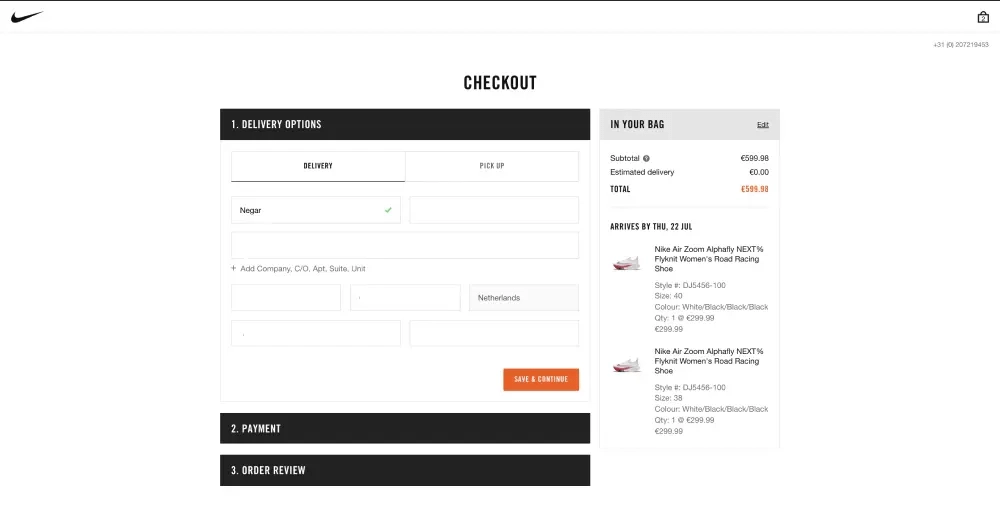
2. Offer Free Shipping
One of the main reasons why shoppers abandon their carts is because of shipping costs. Offering free shipping to customers can be an absolute game-changer.
Now, we understand that shipping is a cost that you need to cover. Offering “free shipping” doesn’t mean you lose out on profit margins.
Instead, you could simply add a higher markup to your products, and remove your shipping fee. This way, you can advertise “free shipping” across your site without actually losing out.
Of course, raising prices is always a tricky business. If you are skeptical about this, consider offering a very low-cost shopping fee. Do some research into your competitors, and see what kind of fees they charge. If yours is the lowest, you can possibly steal some of their customers.
The other option is to offer free shipping on items that meet a certain threshold. This is the most popular shipping strategy, and it can help you achieve two things:
You get to advertise free shipping on your site without slimming down your margins too much
There’s a good chance you will maximize the value of your orders
Once you have figured out your shipping offer, use it as a tool for marketing campaigns. You can advertise free shipping on a banner on your site, in popups, on social media, in your marketing emails, and more.
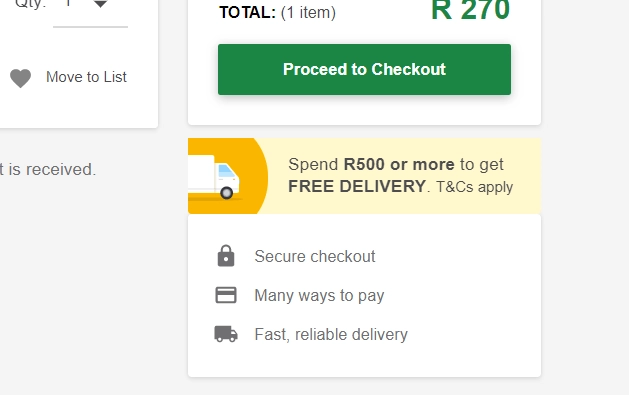
3. Display Social Proof and Trust Badges
If you want to instill more trust into your shoppers, then it’s important to add trust indicators to your site. This is especially important for establishing trust with any new shoppers.
Trust badges could include anything that makes shoppers feel safer about using your site. One of the most effective ways to achieve this is by including social proof indicators – like reviews or customer testimonials. This shows that people have trusted your site and that your products are legit.
You could also display any other trust indicators – like awards, product ratings, or anything else that proves your products are trustworthy.
People follow other people, which is why social proof and trust indicators are so incredibly valuable. If a customer feels like they are the first person to make a purchase on your site, then they will likely feel hesitant.
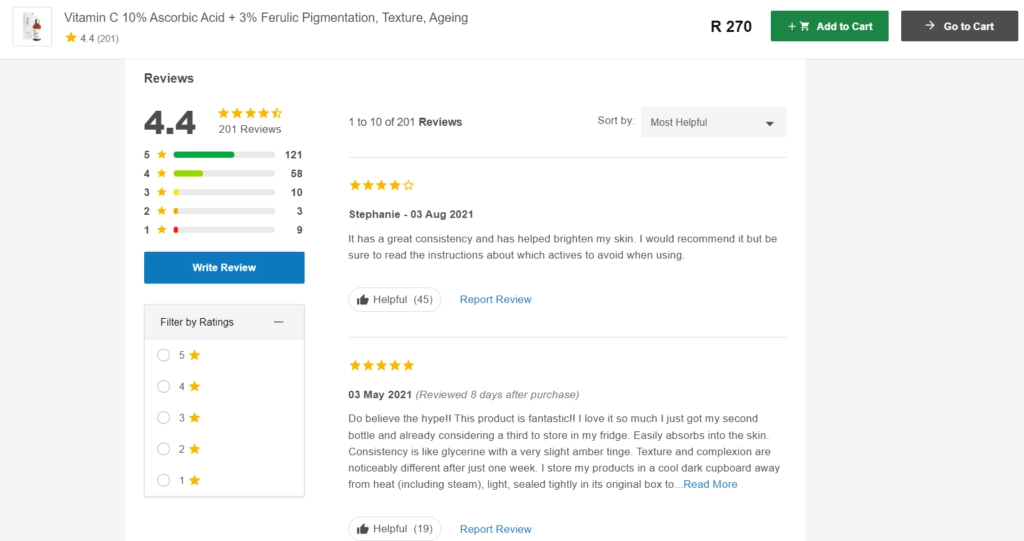
4. Highlight Your Value at the Checkout Page
Sometimes customers just need an extra nudge to get them to hit “buy”. Free shipping is one of these strategies, but you can add value in various other ways.
This could include highlighting your return policy, your money-back guarantee, or even a possible loyalty program that you might have – more on this later.
All of these factors help users to establish more trust in your Shopify store and feel more comfortable committing to a purchase.
Generous returns policies are especially important for eCommerce – as customers can’t see or hold the products in real life before they make a purchase. Knowing that they could return it with no risk could help to push a lot more impulse buys.
5. Send Shopping Cart Abandonment Emails
Just because someone has abandoned their shopping cart, it doesn’t mean they aren’t still interested in the product. Maybe they just need more time to think about it, or an extra push to get them to make the purchase.
One of the most effective ways to combat Shopify cart abandonment is to send out an automated cart abandonment email. You can do this if you’ve captured the shopper’s email address in a form.
You can strategically set up cart abandonment workflows through a platform like Wishpond so that the emails are sent out automatically at the right time. Some great strategies include adding a small discount coupon in the email or simply reminding customers about the product in the cart. Maybe you could add a special offer now, like free shipping.
45% of abandoned cart emails are opened – which is a high open rate for email marketing. This is proof that people still have the products on their minds long after they have abandoned their cart. With the right deal or nudge, abandoned cart emails can be incredibly successful.
The best part is that you don’t need to spend any time sending these. The entire process is automated, so you just set your workflow up and let your email automation tool do the work.
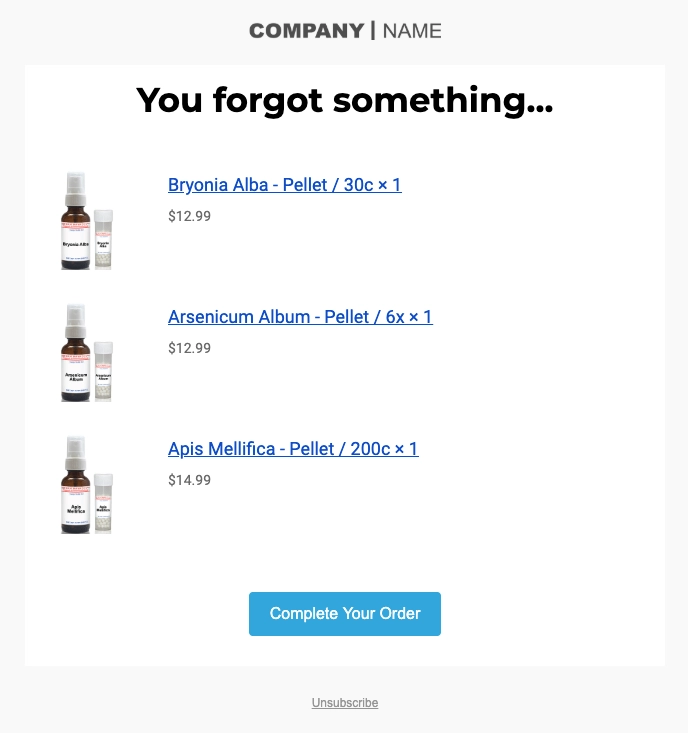
6. Use Abandoned Cart SMS Automations
Abandoned cart emails are a great idea, but cart abandonment SMSs can be even more effective for Shopify stores. Compared to emails, SMS marketing messages have an average 98% open rate, which is far more successful than email. They’re also opened almost instantly, which is great for pushing impulse buys after carts are abandoned.
Shopify stores can use Winback, a Shopify SMS marketing app, to easily recover abandoned carts. Winback users often recover around 34% of abandoned carts, and the app is free to start using.
Just like with abandoned cart emails, you can send special offers and discount codes in SMS campaigns. You can also set these SMS campaigns up as automated workflows so that you don’t have to spend any time sending out campaigns.
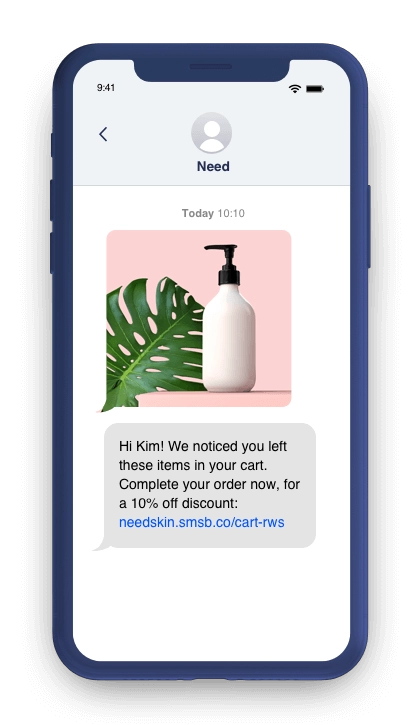
7. Run a Referral Program
First-time shoppers are most likely to abandon their carts, as they might still need to develop some trust in your store. One of the best ways to achieve this is by running a referral campaign.
These campaigns are typically done where a user sends out a unique referral code to their friends, who get a small discount code in return for their first purchase. Running campaigns like this helps you achieve a few things for reducing abandoned carts:
Referrals from friends and family hold more trust and authority for first-time shoppers
The discount encourages more first-time purchases
Referral campaigns can run in the background without you needing to promote them
Referral campaigns can produce an enormous amount of brand awareness without requiring much effort
Basically, if a customer has a positive referral from someone they know, and a discount code, the chances of them abandoning their cart is slim.
You can use a platform like Wishpond or Viral Loops to set up Shopify referral campaigns.

8. Set Up Exit-Intent Popups
Exit-intent popups sense when a user is about to leave your page, and so the popup triggers at just the right moment. These can be highly effective for reducing your Shopify cart abandonment rate.
A good strategy is to include a discount coupon in the popup. This could be just the push a shopper needs to go back to their cart and complete their purchase. Sure, your sale will be slightly discounted, but it’s better than losing out on the sale.
Exit intent popups could also promote any other kind of incentive – like free shipping or joining your referral campaign. You could even add extra products or bundles – something that will also help to increase the value of each cart (see the example below).
The reason these popups work so well is that you simply can’t miss them. If a user decided to abandon their cart after being offered a clear discount, then they probably weren’t interested in the first place.
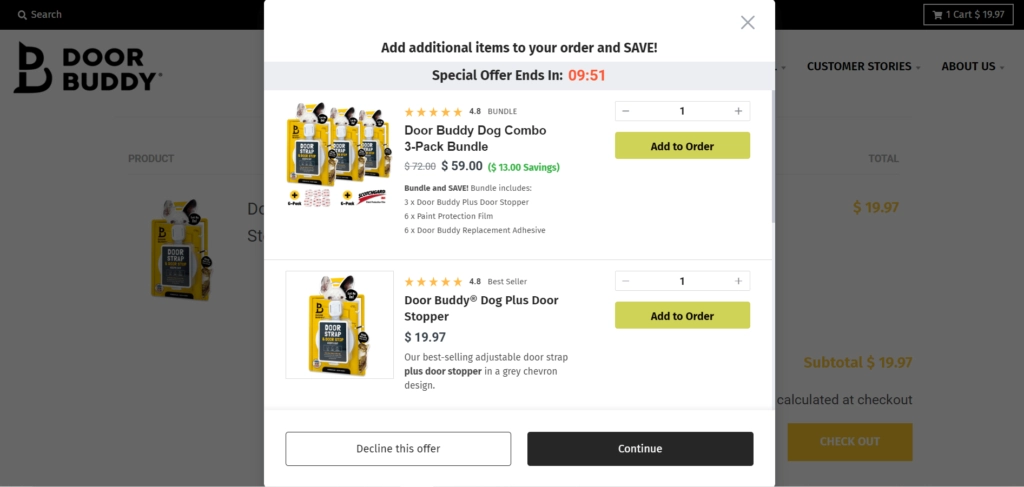
9. Use Live Chat On Your Checkout Pages
79% of online stores that have enabled live chat on their checkout pages report a positive impact from the live chat on their sales and customer experience.
Live chat can help guide customers through your checkout pages. It can answer any of their questions, and provide instant customer support for shoppers who aren’t quite sure about making a purchase.
You can use automated live chat to do this so that it doesn’t put any extra customer support pressure on you.
Even if customers don’t use the live chat feature, having that instant line of communication is reassuring to them, which can help to reduce your cart abandonment rate.
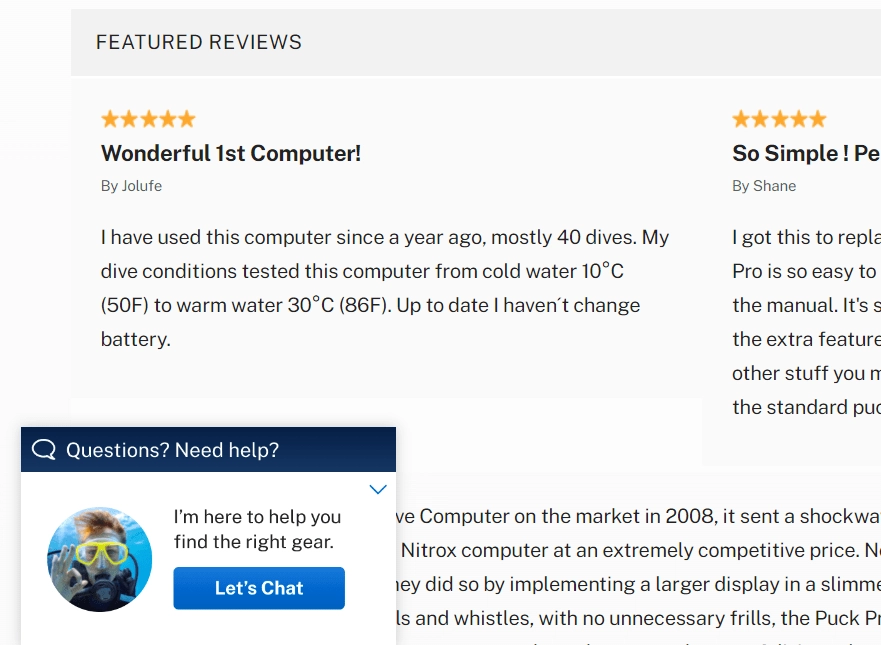
10. Offer Multiple Payment Options
The more payment options you provide, the greater your chances of completing a purchase.
Each customer has their own unique payment preferences. By adding as many different options as possible, you make it easier for people to pay you.
So, try to accommodate as many different payment options as you can. Luckily, this is easy with Shopify, as your Shopify payment processor should provide plenty of options.
11. Offer Express Checkout
We’ve already mentioned how important it is to simplify your checkout process. One of the most impactful steps here would be to ditch any mandatory account registration processes. If users have to create an account before making a purchase, they will likely take their business elsewhere.
Instead, try adding an express checkout option. With this, users can simply select their checkout option and complete their purchase without even filling in any payment information. You can achieve this through platforms like Amazon Pay.
This simplifies the checkout process in a massive way – making the customer journey even easier.
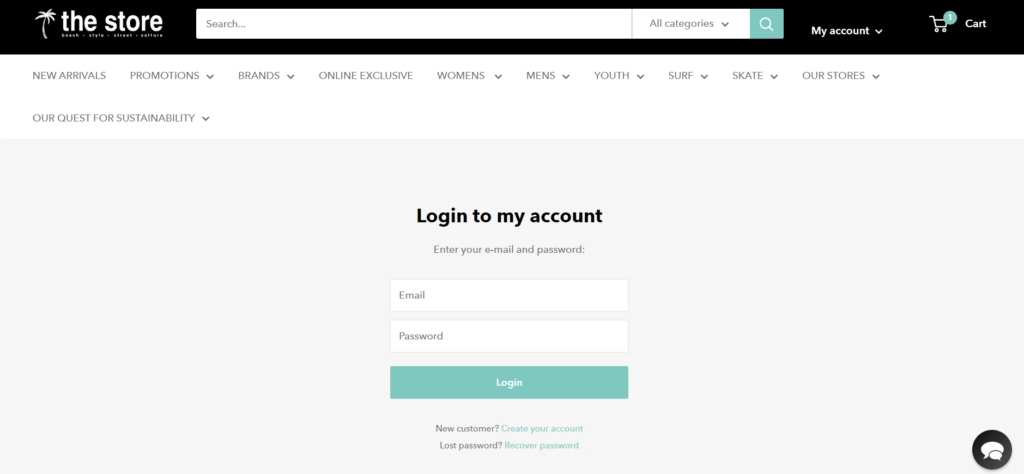
12. Use Retargeting Ads
Retargeting ads are an excellent way to bring customers back to your store. These ads display the products that a user browsed, while they’re on different websites and social networks. Retargeted ads are seriously effective because the user probably already has the product on their mind. Constantly seeing this product on other sites can result in a quick purchase.
You can also use discounts, free shipping offers, and any other special promotions in your retargeting campaigns.
Just be aware of your ad spend and your retargeting ad’s click-through rate. You need to make sure that your ad spend doesn’t eat too deeply into your return on investment.

Conclusion
Shopify abandoned cart recovery is easier than you might think. With the right strategies, you can increase your revenue in a big way.
The best part is that most Shopify cart abandonment recoveries don’t require much effort or input from you. Simply get the right Shopify marketing platform and set your campaign up. Once it’s running, you can win back lost carts while you focus on other tasks.
Getting cart recovery right can be one of the biggest game changers for any Shopify store.
Related Content
- 21 Shopify Marketing Strategies to Double Your Sales
- Dropshipping Marketing Strategy: 12 Insanely Effective Tips to Boost Your Sales
- How to Create the Ultimate Shopify Email Marketing Strategy
- 14 Incredibly Simple Shopping Cart Abandonment Solutions You Must Try

